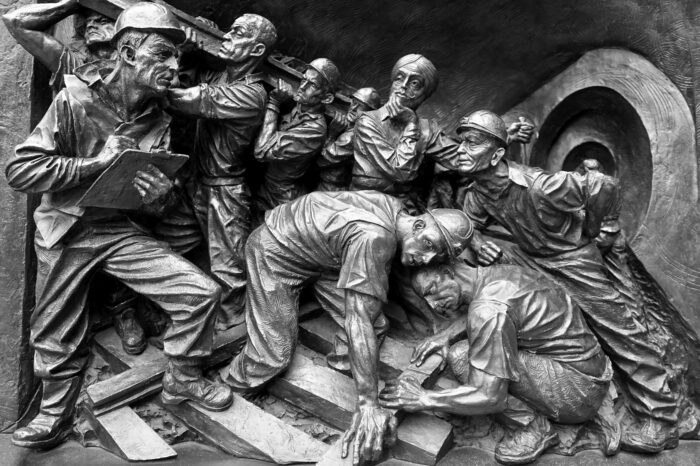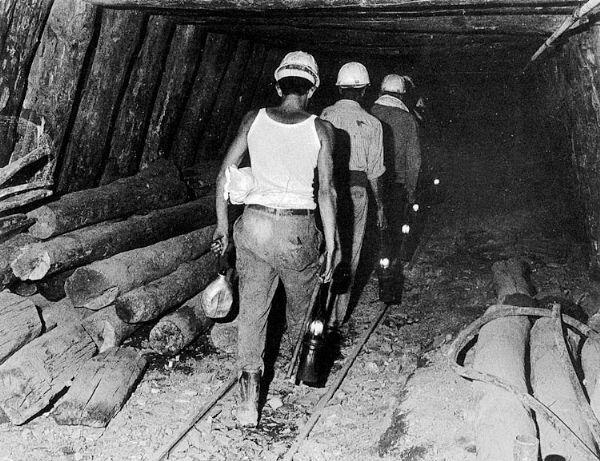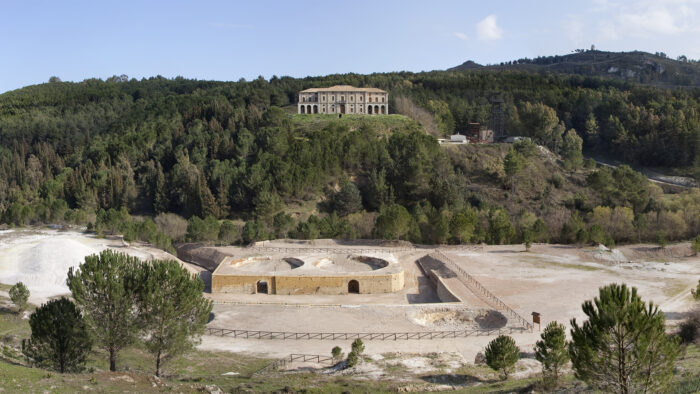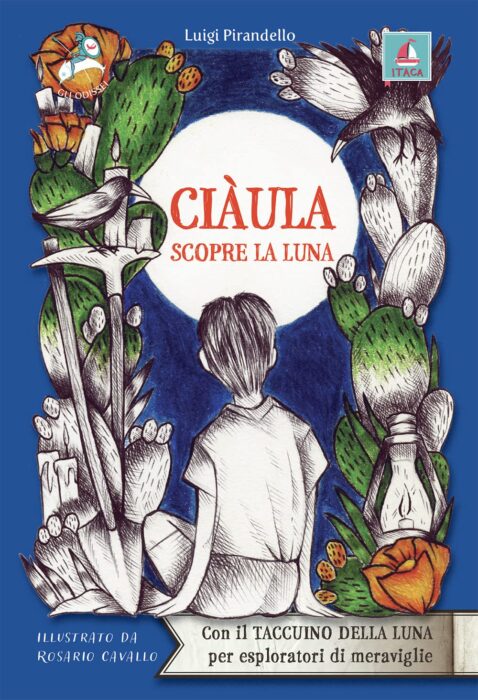Sulphur mines of Sicily: history, charm and places to discover
 The sulphur mines of Sicily are forgotten places, yet still capable of telling the island’s story. Once the beating heart of the global economy, today they preserve memories of toil and hope: the miners, the carusi, the poetry of Pirandello with Ciàula Discovers the Moon. Visiting sites like Floristella or Lercara Friddi means embarking on an emotional journey through industrial archaeology and into the most authentic soul of Sicily. Not just sea and Baroque splendor: in the island’s depths survives a heritage that deserves to be rediscovered and experienced with new eyes.
The sulphur mines of Sicily are forgotten places, yet still capable of telling the island’s story. Once the beating heart of the global economy, today they preserve memories of toil and hope: the miners, the carusi, the poetry of Pirandello with Ciàula Discovers the Moon. Visiting sites like Floristella or Lercara Friddi means embarking on an emotional journey through industrial archaeology and into the most authentic soul of Sicily. Not just sea and Baroque splendor: in the island’s depths survives a heritage that deserves to be rediscovered and experienced with new eyes.
There are places in Sicily that speak a language made of dust, silence, and memory. They are not the sparkling beaches or the Baroque towns, not the markets full of colors and voices: they are hidden landscapes, sometimes in ruins, that tell the story of an island that for centuries lived on toil and hope. They are the sulphur mines of Sicily, once the beating heart of the island’s economy and today silent skeletons waiting to be rediscovered. Anyone who approaches these underground cathedrals immediately perceives that they are not merely abandoned industrial sites, but scenarios that still preserve fragments of life. Stories of men, children, entire communities that, through dust and sweat, built a piece of Sicilian identity.
Sicily’s Yellow Gold
In the 19th century, Sicilian sulfur was known throughout the world. Sicily was in fact the world’s leading producer of this precious mineral, essential for the chemical and military industries. From the heart of the island – particularly the provinces of Caltanissetta, Enna, and Agrigento – came what was called “yellow gold”: raw material crucial for the production of gunpowder, sulfuric acid, and fertilizers. The sulphur mines of Sicily were not just workplaces: they were entire social universes. Around them sprang up villages, shops, taverns. Life revolved around mining activity, which determined the destiny of whole families.
And yet, behind the image of prosperity lay a harsh reality, made of inhumane conditions. The dark tunnels, unbearable heat, and endless shifts were the other side of a wealth that enriched a few while consuming many.
The carusi: lost childhood
One cannot speak of the sulphur mines of Sicily without recalling the carusi. They were children, often little more than boys, sent to work in the depths of the earth. Laden with sacks of heavy sulfur, they trudged through dark and treacherous tunnels, often barefoot, inhaling dust and fumes that scarred their lungs forever. Many of them never lived to see a serene adult life. The chronicles of the time and Sicilian literature – one need only think of Luigi Pirandello – have captured the brutality of those conditions, recounting with raw clarity the injustices suffered.
In the short story “Ciàula Discovers the Moon”, Pirandello tells of Ciàula, a young miner who, emerging from a gallery one night, looks up at the sky and is enchanted by the splendor of the moon. A moment of poetry and wonder that becomes a universal symbol: even in the deepest darkness, a spark of beauty can shine. And in that lunar light is condensed the full contradiction of the Sicilian mines: a hell of suffering and, at the same time, a stage for existential revelations.

A forgotten industrial landscape
As time passed and the international market collapsed, the sulphur mines of Sicily fell into crisis. The last plants were abandoned in the second half of the 20th century, leaving behind ruins, sulphur heaps, and ghostly structures. Today, traveling through the island’s hinterland, one often encounters these remains: decayed extraction towers, bricked-up entrances, heaps of yellowish material that the sun makes gleam as if the mine were still alive. These are places that seem suspended between memory and oblivion. Yet, when observed with curious eyes, they still tell much. They speak of a Sicily that once produced and traded, of international ties that carried Sicilian sulphur all the way to the United States and England. They also speak of social suffering, but above all of resilience and dignity.
Sulphur mines of Sicily you can visit
Not all mines have remained invisible. Some have been restored and today are part of cultural and museum itineraries.
-
Floristella-Grottacalda Mining Park (Enna): one of the most significant sites, preserving not only industrial structures but also miners’ homes and smelting furnaces. Walking here truly feels like a journey back in time.
-
Zolfara Museum of Lercara Friddi (Palermo): hosts a reconstruction of mining environments and valuable historical documentation.
-
Trabia-Tallarita Mines (Caltanissetta): partly visitable today, they represent a highly evocative example of industrial archaeology.
In these places, visitors find not only walls and rusty machinery, but come into contact with a heritage that belongs to the whole of Sicily.

The power of storytelling and memory
Visiting a sulphur mine is not a simple tourist activity: it is an experience that combines culture, emotion, and reflection. It is an opportunity to look at the island with new eyes, understanding that its beauty is not only made of sea and Baroque art, but also of stories of hardship and dignity. The charm of these places arises precisely from contrast: on one side the darkness of the galleries, on the other the light that still filters through the ruins, restoring to the imagination the clink of picks, the voices of miners, the astonished gaze of Ciàula before the moon. Rediscovering the mines means giving value to a cultural heritage often forgotten. It also means reflecting on the relationship between man and labor, between wealth and exploitation, between progress and justice.
An invitation to discover another Sicily
Those who choose to visit the sulphur mines of Sicily, today abandoned, give themselves a journey off the beaten path. It is a kind of tourism that goes beyond postcards and iconic destinations, to enter the true heart of the island. Walking through the ruined galleries, observing the remains of furnaces, touching stone marked by fire and dust is a different way of knowing Sicily: more intimate, more authentic, more profound. It is a journey that moves and prompts reflection, that leads one to question the past but also the present. Because the sulfur mines are symbols of a collective identity that still beats and that deserves to be handed down.
The moon over Ciàula, the moon over us
In the Sicilian night, among the arid hills of the hinterland, the moon still shines. And perhaps, if we stop for a moment in front of a forgotten mine, we too can relive Ciàula’s wonder: the boy who had known only darkness and who, stepping out from the earth’s womb, discovered for the first time the beauty of the sky. Those mines, though silent, are still there. They whisper to those who wish to listen, to those eager to discover a hidden face of the island. A face that tells of Sicily’s toil, hope, and poetry.

